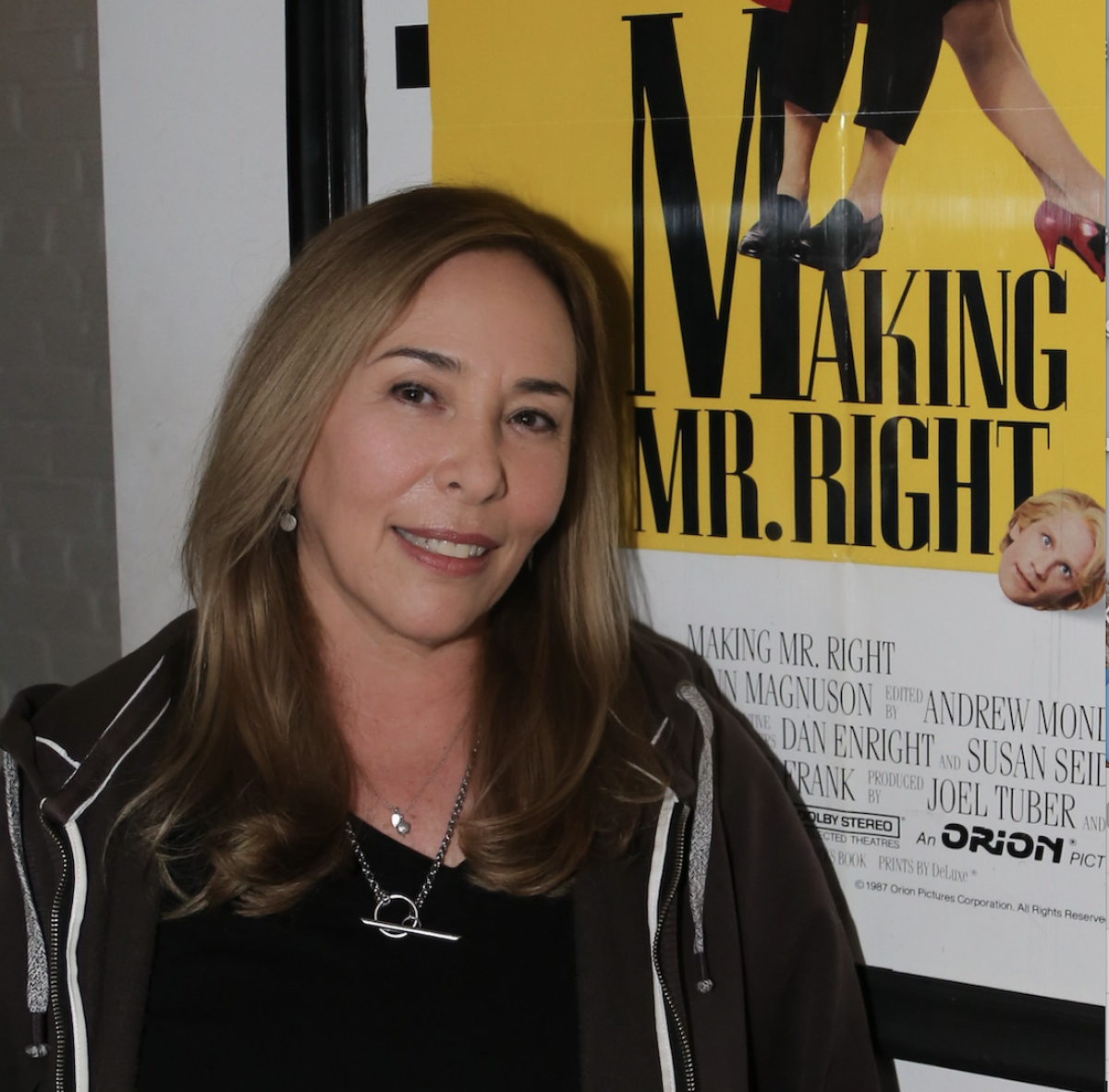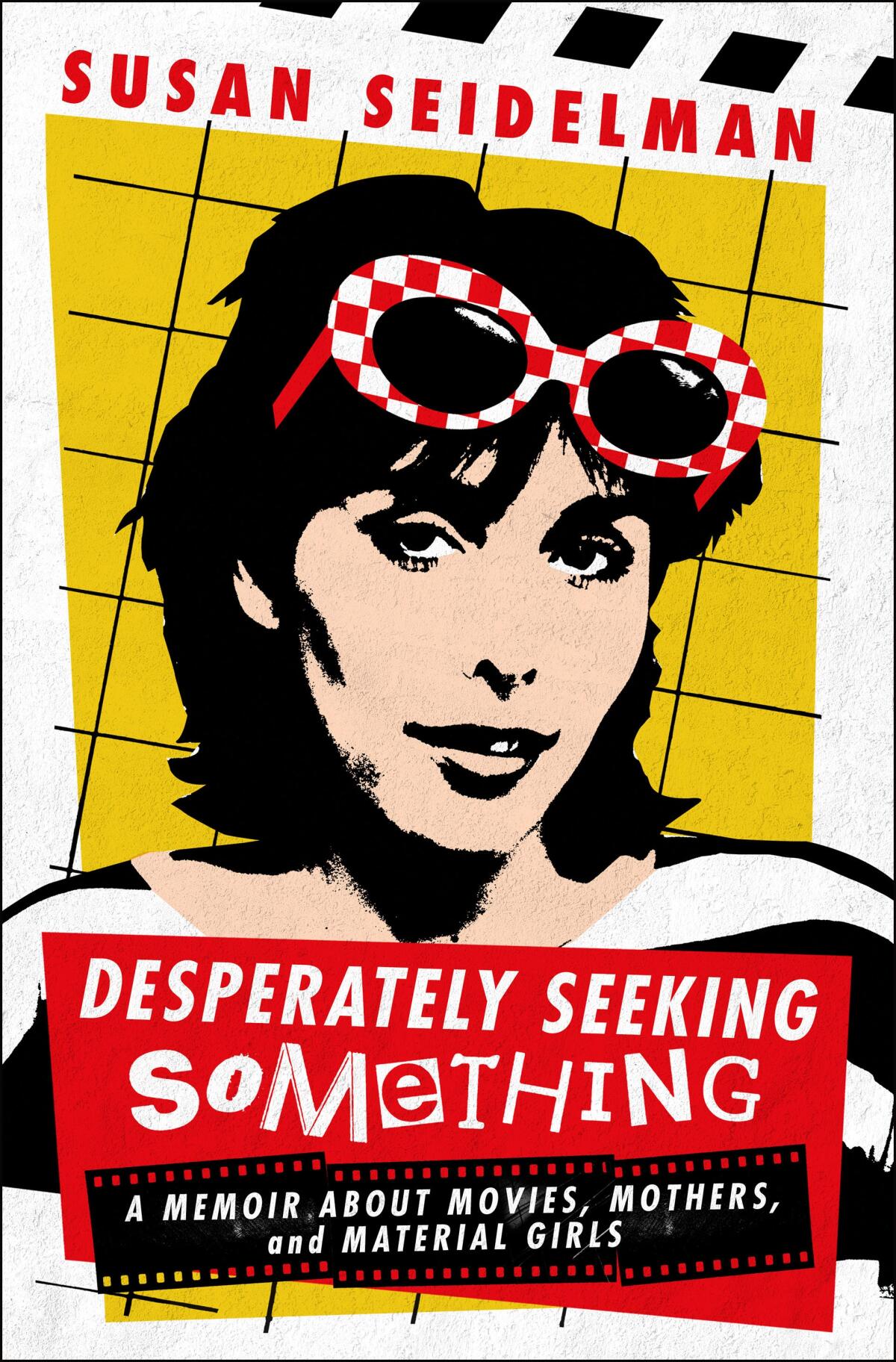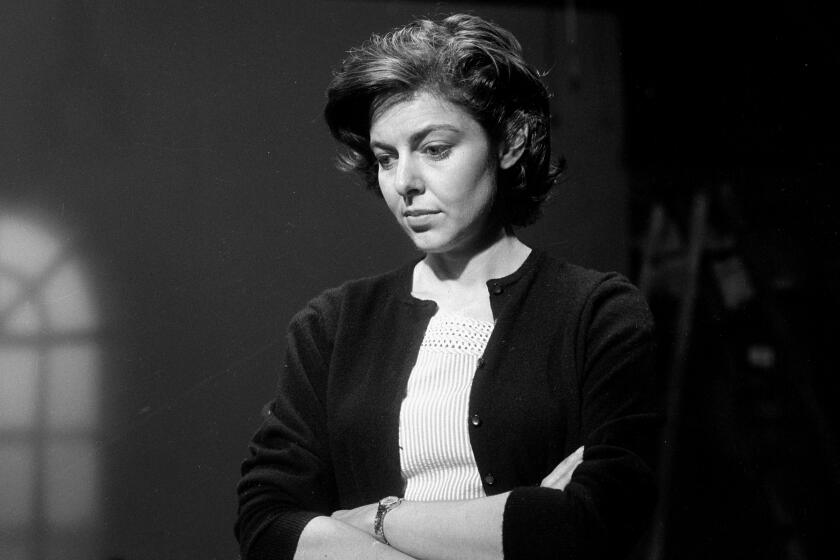‘Desperately Seeking Susan’ director Susan Seidelman takes stock of her groundbreaking career

- Share via
On the Shelf
Desperately Seeking Something: A Memoir About Movies, Mothers, and Material Girls
By Susan Seidelman
St. Martin’s Press: 368 pages, $30
If you buy books linked on our site, The Times may earn a commission from Bookshop.org, whose fees support independent bookstores.
Susan Seidelman is an advocate for what she calls the messy struggle. The movie and TV director, whose “Desperately Seeking Susan” is the great feminist screwball comedy of the ’80s and is enshrined in the National Film Registry, has always relied on her gut to get herself where she wants to be. Which is not to say that Seidelman fell into her career by caprice or good fortune. As a woman, she had little margin for error. Hard work was a given, but also a capacity for what she calls “aesthetic playfulness,” of finding your way toward something great.
That approach has yielded an idiosyncratic career of bold exploration, both within and apart from the Hollywood system. In 1982, Seidelman ushered in the indie film counter-revolution with her debut, “Smithereens,” then became one of the few female directors to consistently work in Hollywood. “I’m not goal-oriented, but I’m very determined,” Seidelman says from her home in upstate New York.
Such was the approach to Seidelman’s first book, “Desperately Seeking Something: A Memoir About Movies, Mothers, and Material Girls,” out June 18. The prospect of setting down the particulars of her public and private selves had been a notion in theory only, something to do much later in life. As it turned out, “later” was 2020, when the pandemic shut down Seidelman’s ability to work on projects and made it possible for her to write.

The COVID-19 pandemic was a trial for her; two weeks into closures with her partner, Jonathan Brett, Seidelman got the news that actor Mark Blum, who appeared in “Desperately Seeking Susan,” had died of complications from the virus.
“In our filmmaking community, Mark was among the earliest victims of COVID, and it hit me very hard,” she says. “I also turned 70, and I became all too aware of my mortality.” After a lifetime of moving forward, Seidelman decided it was a good time to take stock.
“The prospect of writing a book terrified me because I’m a visual person,” she says. “I can write dialogue, but a book? Then the pandemic happened, and I had time to think, and things slowly began taking shape.”
Seidelman relied on her iPhone to help organize her thoughts: “I discovered my Notes app and I just started writing stories down that way.” She had 100 stories in a week. A few months later, she had 1,000. “The process became something akin to film editing,” she says. “I downloaded all the notes and shuffled them around to see where it led me.”
The messy struggle, in other words, but it’s nothing new to her. In the Reagan era, Seidelman was the antithesis of what Hollywood film directors were supposed to look like: the bearded, baseball-capped movie nerd with a hunger for high-concept pictures. “I’m under 5 feet,” she says. “If I walked into a studio executive’s office, they would be incredulous. So I had to overcome that because no directors looked like me.”
Despite the big shrug off by Elaine May, who doesn’t do interviews, Carrie Courogen has produced the definitive book about the comedy icon’s life and career.
“Desperately Seeking Something” traces the arc of American film over the last 45 years as refracted through Seidelman’s singular career. When Seidelman, then a recent New York University film school grad, scraped up the money to finance “Smithereens,” she had no ambitions other than to direct. But the movie’s scrappy vibrancy resonated with audiences and became an art-house hit.
“Smithereens” was also screened at the Cannes Film Festival — the first independent film to play in competition there. Thus, Seidelman unwittingly launched the New York indie film movement that would give us Jim Jarmusch, Spike Lee and Bette Gordon.
Seidelman had no such antecedents; as a young movie fan, she remembers seeing only one film in a cinema directed by a woman: Elaine May’s “A New Leaf.” That was in Philadelphia in 1969, when as a high school senior, Seidelman was required by her guidance counselor to take an aptitude test to determine her career prospects. “My test result said I should be a librarian,” Seidelman writes. “At first I was horrified. … What I didn’t realize was that the aptitude test got it right. A librarian loves stories — so did I.”
Coming off “Smithereens,” Seidelman was given the keys to direct a Hollywood movie. “Desperately Seeking Susan,” in which a bored New Jersey housewife (Rosanna Arquette) becomes an amnesiac and assumes the identity of an East Village scenester (Madonna), was written, produced and directed entirely by women — unheard of at the time. The comedy, which fortuitously dovetailed with the ascent of Madonna’s pop career, became a box office hit and a cultural phenomenon.

“‘Desperately Seeking Susan’ would have been a very different film if it didn’t have women producers and writers,” says Seidelman. “I related to both of the characters so it felt organic to make that film.”
Buoyed by its critical and commercial success, Seidelman signed a four-picture deal with Orion Pictures, another benchmark achievement for a female director. She was also present at the dawn of the HBO renaissance, directing the pilot of “Sex and the City” as well as a number of anthology series for the cabler and Showtime, by which time Hollywood had made tiny strides in hiring female directors.
As an undergrad, Seidelman had no grand designs on directing. Then, during her junior year as a fashion design major at Drexel University, she took a film appreciation class and her mind was blown. Bergman, Antonioni, Varda — it was a crash course in the great European auteurs, a primer on how to create characters with psychological depth, how to play with narrative flow — the infinite tool kit of filmic storytelling.
Griffin Dunne was born into privilege but has also endured his fair share of trauma and tragedy, which he recounts in his family memoir, ‘The Friday Afternoon Club.’
From the outset, Seidelman wanted to make movies with strong female protagonists who improvise their way toward a sense of self, an identity that sticks — a counter-intuitive notion in a business whose fossil fuel was male testosterone. Undaunted, Seidelman continued to explore themes of female desire and power. 1987’s “Making Mr. Right,” a social satire about a romance between a PR executive (Ann Magnuson) and a robotic simulacrum of a brilliant scientist (John Malkovich), was a sly inversion of “building a perfect girl” films like John Hughes’ “Weird Science.” Still, Seidelman endured the body blows of male critics who objected to “the idea of a woman abandoning human men to find satisfaction with a programmable ‘sex-bot.’”
“Most of the top critics were men,” Seidelman writes. “Intentionally or not, there was a sexist bias.” “Making Mr. Right,” which lost money upon its initial release, has since found its revisionist second wind among younger audiences.
Seidelman’s new memoir is a primer for being true to your art without losing your integrity, even within the rigid, winner-takes-all culture of Hollywood.
“It was a scary time to be writing the book, when the world seemed like a sci-fi movie,” she says. “But having gained some wisdom with age, I felt I had finally achieved enough distance from my life without having to deal with all the emotional baggage of youth, like when you’re 37 and you’re reading a bad review of your movie and it crushes you.”
More to Read
Sign up for our Book Club newsletter
Get the latest news, events and more from the Los Angeles Times Book Club, and help us get L.A. reading and talking.
You may occasionally receive promotional content from the Los Angeles Times.








